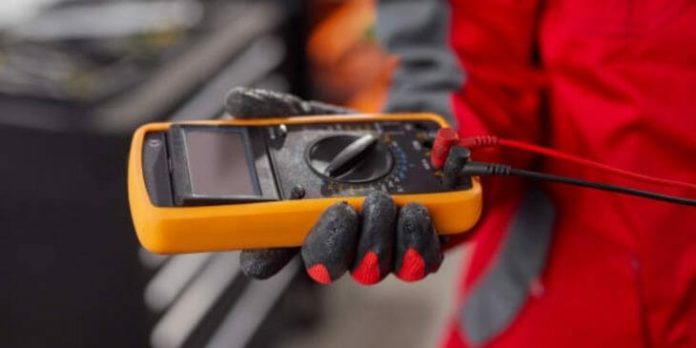As a homeowner, you know the importance of a well-functioning AC unit, especially during those hot summer months. But what happens when your air conditioner starts to act up? One common issue homeowners face is a stuck relay in their AC unit, which can hinder its ability to provide cool and comfortable air.
If this sounds familiar, don’t worry – we’ve got the perfect solution for you. In this step-by-step guide on how to fix a stuck relay on an AC unit, we’ll break down everything from identifying signs of a faulty relay switch to providing detailed instructions on conducting repairs yourself.
And if it’s looking like too much to handle alone, you can look for AC repair in Fort Mohave, AZ or any local region to handle it instead.
Identifying A Stuck Relay On Your AC Unit
To identify a stuck relay on your AC unit, you must first understand what a relay is and be aware of signs indicating that the relay may be malfunctioning.
Understanding What A Relay Is
A relay is an essential component in your air conditioning unit that functions as an electrical switch. It plays a crucial role in regulating the flow of electricity to various parts of the HVAC system, including the compressor, fan motor, and evaporator coil.
Think of it like this – when you adjust your thermostat to lower the temperature inside your home, a low-voltage signal is sent through the electrical wiring within your AC unit, ultimately reaching and activating the relay.
Once triggered, it closes its internal contacts allowing higher currents to flow into other components, such as motors, in order for them to operate effectively.
Signs Of A Stuck Relay
One of the most common signs that your AC unit might have a stuck relay is when it continuously runs without turning off. You’ll notice this if you set the thermostat to a specific temperature, but the unit just keeps blowing out cold air without ever shutting down.
Another sign of a stuck relay is when your AC unit suddenly stops working altogether. If you can still hear the blower motor running, but no cool air is coming out, it could be due to a faulty relay switch.
In some cases, you may also notice that the compressor won’t turn on or that an audible clicking sound is coming from inside the unit.
Fixing A Stuck Relay On Your AC Unit
To fix a stuck relay on your AC unit, you’ll need a few tools and some basic electrical knowledge – but don’t worry, we’ll guide you through the process step-by-step.
Tools Needed
To fix a stuck relay on your AC unit, you will need a few basic tools. Firstly, make sure to have a screwdriver set handy as removing the panel cover from the relay switch housing is usually required.
Apart from these essential tools, having wire strippers and pliers can be helpful for managing wires and connectors during repairs.
These tools make diagnosing and fixing problems with your AC unit much more manageable.
Turning Off Power To The AC Unit
Before attempting any repairs on your AC unit, it’s important to turn off the power to the system. Failure to do so can result in electrical shock or other hazards. To start, locate the breaker box and flip the switch for your AC unit.
After turning off the power, wait a few minutes before beginning work on your system, as certain components may still hold an electrical charge even after the power is turned off.
It’s recommended to use a non-contact voltage tester to ensure there is no electricity present before proceeding with any repairs.
Replacing The Stuck Relay
Once you’ve identified that the relay switch is indeed stuck, it’s time to replace it.
Firstly, ensure you have all the necessary tools, including a screwdriver, pliers and a new relay switch. Next, ensure that the power to your AC unit is turned off before making any repairs – this should always be your first step.
You can now proceed with removing the old relay switch by gently prying it out of its socket using your pliers. Once the old switch has been removed, simply insert the new one in its place and secure it firmly in position using screws or clips as required.
Finally, turn on the power to your AC unit again and test whether everything is functioning correctly.
Testing Your AC Unit After Fixing The Relay
Once you have replaced the stuck relay on your AC unit, it’s important to test it to make sure it’s working properly. Power on the unit and check for proper functioning, such as cool air blowing from the vents.
Powering On
After replacing the stuck relay, it’s time to test if your AC unit is functioning properly. Before anything else, make sure that the circuit breaker and power are turned on for your AC unit.
If all is set up correctly, turn on your AC unit from the thermostat by setting the temperature lower than your room temperature.
Wait for a few minutes to see if cool air comes out of your vents, and feel around them to ensure they’re not blocked by any objects. Check also if any leaks or strange noises are coming from your unit, as these can be signs of another fault needing repair.
Checking For Proper Functioning
After replacing the stuck relay on your AC unit, checking for proper functioning is crucial. Start by powering on the unit and verifying that it turns on without any issues.
Once you’ve confirmed that the unit is running smoothly, test its temperature control capabilities by setting a desired temperature and seeing if it maintains that level over time.
You can also check for airflow by placing your hand near the vents and ensuring that there’s adequate circulation. Remember to keep an eye out for any warning signs like rising temperatures, unusual sounds or smells, or water leaks, as these could indicate ongoing issues with your AC unit.
Final Thoughts
Knowing how to fix a stuck relay on an AC unit can be a simple and cost-effective way to keep your home cool during the hot summer months.
Remember always to turn off the power before attempting any repair work, and if you’re ever unsure or uncomfortable working with electrical wiring or components, seek professional help.
You can extend its lifespan by taking care of your air conditioning system through regular maintenance and repair work while keeping energy costs down.















